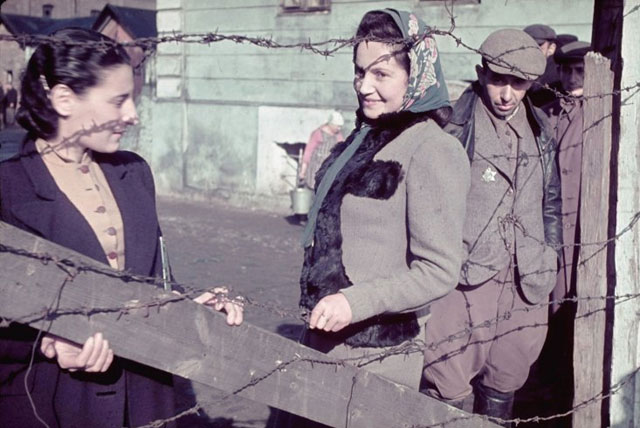Color photos of Nazi-occupied Poland, 1939-1940
German photographer Hugo Jaeger traveled around Poland after the Nazi invasion and documented daily life there. Life has a selection of Jaeger’s color photos from that time.

Why would Hugo Jaeger, a photographer dedicated to lionizing Adolf Hitler and the “triumphs” of the Third Reich, choose to immortalize conquered Jews in Warsaw and Kutno (a small town in central Poland) in such an uncharacteristic, intimate manner? Most German photographers working in the same era as Jaeger usually focused on the Wehrmacht; on Nazi leaders; and on the military victories the Reich was so routinely enjoying in the earliest days of the Second World War. Those pictures frequently document brutal acts of humiliation, even as they glorify German troops.
The photographs that Jaeger made in the German ghettos in occupied Poland, on the other hand, convey almost nothing of the triumphalism seen in so many of his other photographs. Here, in fact, there is virtually no German military presence at all. We see the devastation in the landscape of the German invasion of Poland, but very little of the “master race” itself.
It is, of course, impossible to fully recreate exactly what Jaeger had in mind, but from the reactions of the people portrayed in these images in Warsaw and Kutno, there appears to be surprising little hostility between the photographer and his subjects. Most of the people in these pictures, Poles and Jews, are smiling at the camera. They trust Jaeger, and are as curious about this man with a camera as he is about them. In this curiosity, there is no sense of hatred. The men, women and children on the other side of the lens and Jaeger look upon one another without the aggression and tension characteristic of the relationship between perpetrator and victim.
It’s still amazing the extent to which early color photography can transport us back to the past in a way that black & white photography or even video cannot.





Stay Connected